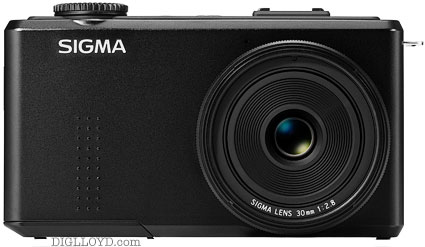Reader Asks: Leica M Typ 240 / M240 + 50/2 APO or Sigma DP2 Merrill?
Scott R writes:
I've enjoyed subscribing to your site for a couple or more years because of your technical approach in evaluating photography equipment and sensible techniques.
I have used Leica M cameras for over twenty years with the last iteration being an M8 and a host of lenses all in the 28mm to 50mm focal lengths. In fact, the focal length I keep bouncing between is 35mm and 50mm, so the 45mm equivalent of the Sigma DP2M is enticing.
Your stunning Sigma DP2&3M photographs are causing me to reconsider my preordered Leica M Typ 240 and 50AA. It's an expensive order totaling over fourteen thousand dollars, but I've got the resources to spend on whatever I want but the pragmatic side of me dislikes spending money on items not necessarily needed.
I do not require fast shooting and use a tripod for scenic shots, so chances are the slowness of the Sigma will not be major frustration to me. And, I'm nearing fifty years old now and my eyesight is compromising the speed of my draw with the rangefinder, so autofocus is becoming of interest to me for the first time in my life.
You mention the Sigma DP2M corresponding to the sharpness of 24 megapixel cameras, so do you think it is neck-to-neck with the combination Leica M Typ 240 and 50AA, or does the Sigma trump it?
DIGLOYD: Ouch! This has got to hurt if you’re Leica having someone ask about the latest flagship body and lens in comparison to a $799 point and shoot.
But it’s a perfectly legitimate question on the image quality front.
It’s also a perfectly legitimate question on the usability front also (autofocus).
In this case the question as stated yields a very simple answer: with the Sigma DP-2 Merrill costing about $799 after instant rebate, it’s an accessory: the Leica M Typ 240 + 50/2 AA plus EVF plus grip is around $16K or so, probably $18K with tax here in California. In other words, buy the DP2M and try it. You can’t lose. And it makes a great companion to the Leica M in any case.
In general, the 14.75 X 3 megapixel Sigma/Foveon sensor cannot resolve to the level of a 24-megapixel camera. But image quality involves more than resolving power, as discussed further below and as one’s own eyes can tell when seeing the images.
Leica 50/2 AA and M240 general
The Leica 50mm f/2 APO-Summicron-M ASPH lens can be expected to outperform just about any lens. I say that both from its MTF chart and based on some high quality images shared with me privately by a reader. Also, I have the Leica 50/1.4 Summilux and 50/0.95 Noctilux and I have used the 50/2 Summicron, and it’s clear that the 50/2 AA is better than any of those.
The Leica M Typ 240 offers a miserly 24 megapixels, a glaring mismatch in lens performance to sensor resolution when the lens clearly could do wonders on a ~70 megapixel sensor, which would also likely do away with the ugly moiré and other digital artifacts while simultaneously delivering unprecedented detail. How many years to wait?
Based on images I’ve seen, the actual resolution gains of the M240 CMOS sensor over the M9 CCD sensor are marginal to modest, and to my eye the CCD sensor of the M9 shows more appeal. But a big caveat applies: I have not had both cameras in my own hands for an A/B test, and thus I hope to prove to myself that this impression is incorrect. As I see it, the big advantage of the M240 over the M9 is its Live View feature especially with the optional EVF wart— precise framing/composition and an ability to focus precisely under more conditions.
Resolving power
In terms of resolving power, the Leica M Typ 240 or even M9 or any other 24-megapixel camera will outresolve the 14.75 X 3 megapixel Sigma DP2 Merrill, at least under conditions favorable to the RGB Bayer-matrix sensor. See the Nikon D600 and Canon 5D Mark III vs Sigma DP1 Merrill comparisons.
But not by a huge amount and not as cleanly on a per-pixel basis. The subject matter exerts an influence, and on a black and white resolution chart just about any 24-megapixel camera will easily outresolve the DP Merrill. Which decides the matter if one likes to shoot resolution charts.
Still, the Sigma DP Merrill compares reasonably well even to the Leica M Monochrom, which has none of the Bayer-matrix limitations of a color/RGB camera. And as proven, focusing the Leica MM with a colored filter can be a losing game (focus shift), so the reality of real world usage can degrade the Leica MM results all too often. See Leica MM vs Sigma DP1 Merrill in Guide to Leica. And of course a true RGB image provides a ton more post-shot flexibility for black and white conversion if monochrome is one’s thing.
Focusing is actually a BFD (Big Fun Deal). Meaning that I've had plenty of Leica M9 images ruined by small focus errors. Resolution is what you actually get in the final image: lens + sensor + focus accuracy. Reality vs theory. So if eyesight begins to degrade the odds, autofocus means a sharper image on average. I would say AF is quite accurate on the DP Merrill, with the usual AF weaknesses which apply to AF systems on most any camera. But on balance, Live View with the EVF and diopter adjustment on the Leica M Typ 240 should mitigate the focus issue considerably.
But there are other issues that go beyond resolving power that ultimately contribute (under certain conditions) as much or more to image quality:
- Moiré — some of the Leica M9 images I’ve seen with the 50mm f/2 APO ASPH show truly hideous moiré. While moiré is usually a non-issue, it can be a horrible mess with some subject matter. It’s just a question of the subject matter; the moiré is inherent to the Leica M9 or M240, unlike the Nikon D800E which tends to avoid the issue due to its high resolving power.
- Jagged edges (“jaggies”)— slanted and diagonal lines suffer from jagged edges with all Bayer-matrix sensors. Effects range from clean to ugly— depending.
- Color artifacts — red and green speckles dotting high contrast edges, snow polluted with such speckles, fine twigs and branches all can exhibit such pixel-level degradations that make absolute resolving power a close second.
- Color resolution— fine color detail, especially fine red or blue detail which cuts Bayer-matrix resolution in half. The dubious premise of most testing is to use black and white resolution charts (or color on white), which artificially favor Bayer matrix resolution.
- ISO — the main weakness of the Sigma DP Merrill. I shoot mine at ISO 100 or 200, and I’m reluctant to use it beyond that. With the Leica M9, ISO 160 or 320 were all I wanted to use, but perhaps the M240 improves upon matters.
The Sigma DP Merrill with its Foveon sensor does not suffer from either moiré or color artifacts or color resolution issues, and so far I’ve seen no jaggies either. This is why a well done image from it looks so amazingly crystal clear.
So one might fairly ask: what is “resolution” when actual per-pixel image quality is considered? Worst case or best case for a Bayer-matrix camera? How does it print? Or at least what is the immediate visual impact?
The absence of digital artifacts and the resolving power for fine color detail with the Foveon sensor is not easily quantified, but is immediately apparent to the eye, as the recent tulip examples and portraits show. I would characterize the Foveon sensor in the Sigma DP Merrill as being like a somewhat finicky film emulsion— expose it well for its best attributes, and the results are eminently rewarding. Go outside the comfort range, and a conventional sensor might be more appealing.






























